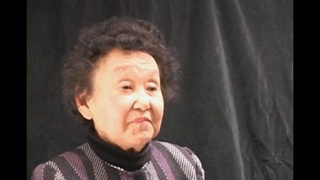Interviews
Train ride to Jerome Relocation Center
I just doesn't recall how long it take, but anyway, thinking about other things and so mad. Now concentration -- they didn't say relocation, they said concentration camp, you know, everybody. And other people, see, I understand Japanese so the Issei talkin' about, very sad and loss of things and what it is that they didn't able to harvest some things, and some owner or the neighbor or the worker that took over and they sold the things but didn't send the money and things like -- all kinda sad stories. And I didn't complain, and I don't talk to them, I just listen. I understand, sad, and I don't want to, them to feel more bad or sad, so I just kept quiet.
Date: December 17 & 18, 2003
Location: Washington, US
Interviewer: Alice Ito, Tom Ikeda
Contributed by: Denshō: The Japanese American Legacy Project.










